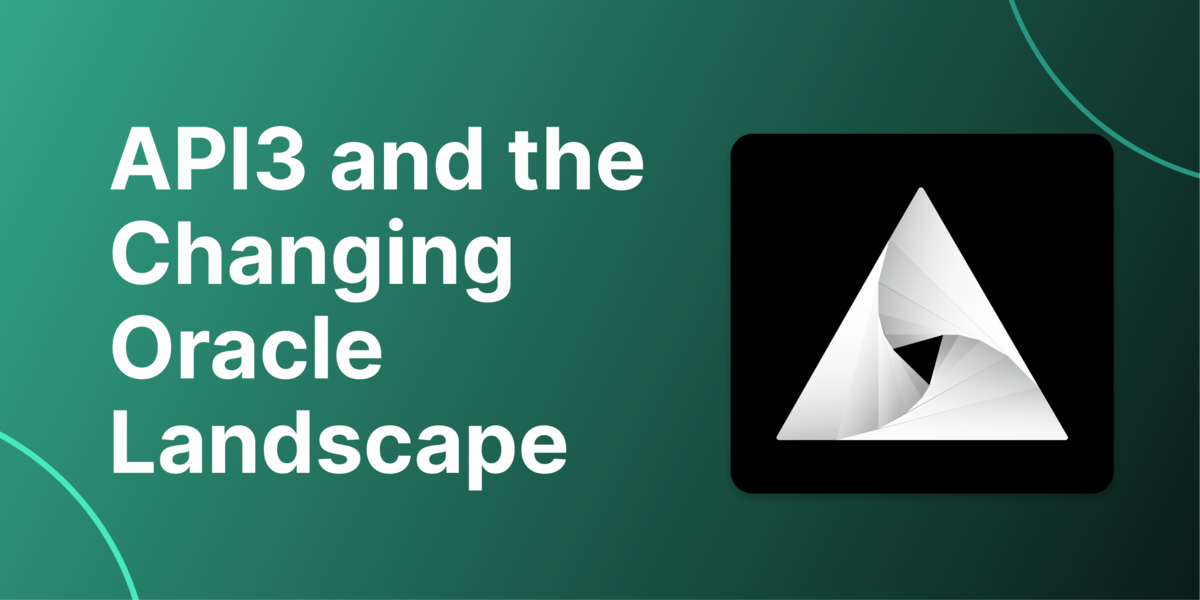Augur has quickly become one of the most anticipated projects in the blockchain space this year, but the man who created the theoretical basis for the decentralized prediction market thinks the platform will eventually crash and burn. Paul Sztorc, a researcher at Yale’s Department of Economics, is the author of the Truthcoin whitepaper, which originally outlined how a blockchain-powered prediction market could work. He has advised the Augur developers in the past, but he believes a willingness to drift away from the original Truthcoin vision will be the project’s downfall.

Augur’s Origins
In response to the recent announcement of Roger Ver’s own Truthcoin implementation, Paul Sztorc has been asked many questions about the differences between Ver’s Truthcoin-based platform and the Ethereum-powered Augur. Due to these endless questions and a possible “ethical duty” to disclose everything he knows about Augur, Sztorc decided to add an Augur section to the FAQ page on the Truthcoin GitHub. On this page, Sztorc has laid out the history of Augur from his perspective.
According to Sztorc, Augur originally started as Dyffy, a social, altcoin-based betting website. The startup failed to gain any real traction in the short term, which is why, Sztorc claims, the company’s CEO, Matt Liston, eventually turned to the Truthcoin concept. In the Truthcoin FAQ, Sztorc explains why he turned down an official advisory role at Dyffy:
“Matt wanted to officially hire me as an adviser. I felt that this would imply that I had uniquely endorsed Dyffy. I was not ready to do this to any of the other groups (to whom I made the same promise of impartiality), particularly because Dyffy's team of web developers was so unlike what the project required (C++ programmer(s) familiar with Bitcoin) so I refused, instead advising Dyffy (and others) for free for several months.”
During this time period, Sztorc was advising a few different Truthcoin-related projects for free, which added an additional 10-20 hours to his normal workload at the Yale Economics Department some week. By the Autumn of 2014, Dyffy was looking to rebrand under another name, and Sztorc was able to introduce the young startup to some potential investors. Sztorc describes the negative reaction from these investors on the Truthcoin GitHub:
“Many of these investors were concerned about my lack of personal involvement, and cited a wide disparity between the quality of my work and [Dyffy and Augur's] lack of relevant experience.”
Overall, it did not appear that Sztorc was having an enjoyable time as an advisor to the project that would eventually become Augur. Sztorc has gone as far as to claim that his work and writings related to Truthcoin would often be ignored by the Augur team. Sztorc has also written about the Augur team’s alleged inability to eventually work out the answers to their own questions:
“On occasion I would be asked questions, to which I felt the answer was, with a little work, knowable. So, instead of answering immediately, I would wait to see if they would get the answer for themselves. I did this three times, and in each of the three times Augur failed to ever produce any answer at all. By this I mean that they have been thinking and wondering about answers to important questions for months.
Augur’s Decision to Build on Ethereum
One of the main issues that Truthcoin Creator Paul Sztorc seems to have with Augur is that it’s built on Ethereum. This is a point that Sztorc continues to hit in comments regarding Augur, as he believes there is no point in building on a platform that “may not exist in a few years.” Sztorc has gone as far as to say, “No one should build anything on Ethereum until we can be sure there actually will be an Ethereum.”
Although most of Sztorc’s issues with building Augur on top of Ethereum have to do with his belief that Ethereum itself will fail in the long run, he also has technical concerns about using Ethereum instead of merge-mined, two-way pegged sidechains for a decentralized prediction market. He has laid out one such technical concern in the Truthcoin FAQ:
“To summarize quickly, in Ethereum (unlike with merged-mined sidechains), it is trivial to build ‘parasite contracts’ which steal the labor done by Truthcoin's Voters without paying for it. By doing this, these parasite contracts can then undercut the fees of the Truthcoin protocol. In this case, one of Ethereum's most beloved features, that the 'contracts' can reference and build on each other, is revealed to be breathtakingly restrictive. It implies that nothing built on Ethereum (as currently designed) will ever be able to pay anyone for their labor (for the inputs that users type into Ethereum). For any labor to enter Ethereum, this contract-reference feature would have to be disabled or restricted.”
When asked about the leeching problem for prediction markets on Ethereum, Augur’s Joey Krug provided the following response via email:
“The leeching problem is pretty simple: if someone pays for information from our oracles, then after that information is stored on chain anyone else can access that information. It's the nature of public goods, and since this data is stored on the blockchain, anyone can access it, which isn't really a bad thing in my opinion. The same problem exists on a bitcoin sidechain (presuming you mean fork of bitcoin sidechain, as we plan to sidechain to bitcoin as well, we're just not forking it). Unfortunately, zero knowledge proofs actually contribute to this problem, since they allow you to provide a proof that an oracle reported on something in a certain way (this is also why the problem still exists on fork of bitcoin sidechains).”
The Augur team claims they’re building on Ethereum due to the simplicity involved with the blockchain platform. In a blog post from February 2015, Augur Core Developer Joey Krug laid out the main reasons as to why the team decided to choose Ethereum over the other available options. Krug also shared some additional comments regarding the decision to build on top of Ethereum via email:
“More succinctly, Ethereum allows us to move much faster than building on Bitcoin due to its turing complete script. No matter how this is implemented, to use Bitcoin on it you need a sidechain, there's no way to build this system (without m of n oracles) on native bitcoin. Combined with Greg Maxwell's comment that 2-way peg (decentralized) sidechains could be 5 years off it really confirms our decision to build using Ethereum, get a platform out there to iterate on, and support stablecoins so mainstream users can buy in and predict things easily. Then in a few years once merge mined sidechains are out we can implement them, whilst already having a large network of users. Ease of use for the mainstream user (in the coming months, not years) is extremely important for us. For instance, looking at our alpha statistics we had 15,000 users in the first day, of those, 14,985 accessed our website implementation as opposed to the traditional desktop client.”
It should also be noted that sidechains and Ethereum are not mutually exclusive. As Augur has explained in the past, they plan to be a Bitcoin sidechain as soon as the technology is available.
More discussions between Sztorc and various Augur team members on the topic of Ethereum can be found on the Truthcoin forums.

Time Will Tell Us Who's Right
Augur is currently experimenting with a new algorithm that they believe will return more accurate predictions than Truthcoin, but Sztorc is not impressed. A debate between Sztorc and two members of the Augur team erupted in the comments section of a blog post related to tests of the new algorithm. Eventually, Sztorc claimed he was finally ready to completely remove himself from the debates with the Augur team:
“I could continue like this even further, but there is no reason for me to do so, or, really, even respond at all. Augur has never understood how Truthcoin works, and now (too late) I realize that they never will. I have had countless conversations, just like this one, with Augur in private, which is unfortunate because, to an innocent onlooker, it might now appear that we are, categorically, two ‘choices’ from which ‘one’ should be selected. Roger Ver has generously delivered me from this endless time-sink and provided the programming talent and recognition I need to produce the code-version of Truthcoin.”
Sztorc also provided this additional statement via email:
“Assuming their solution works, it is like strengthening the barrel of a gun, to prevent the gun from misfiring. However, my current design never actual misfires, so reducing the error rate from 0% to 0% isn't interesting. Obviously, the major reason not to go with it is because it might have all kinds of yet-unforeseen problems, so even if the benefits were small, I wouldn't be spending any of my time on this.”
We now have two separate blockchain-based prediction market platforms in development, and only time will tell which one turns out to be the winner (if either). During an email conversation with Sztorc, the Truthcoin creator claimed he now believes Roger Ver’s project to be the only Truthcoin implementation currently in development. This is a testament to how far Augur has moved away from Sztorc’s original vision. Sztorc added:
“Augur is based on Truthcoin, and is essentially a fork at this point. While I would never wish ill on any prediction market project, I’m confident that time will show Truthcoin outperforming their fork of my project."
Correction: An earlier version of this article claimed that Dyffy had rebranded to Pythia at one point. As Augur's Joey Krug has pointed out in the comments, this rebranding never officially took place.

Kyle is a freelance writer who has been interested in bitcoin since 2011. His work has been featured on Business Insider, VICE Motherboard, Let's Talk Bitcoin, RT's Keiser Report, and many other media outlets. Follow the author on Twitter @kyletorpey






 Or check it out in the app stores
Or check it out in the app stores
